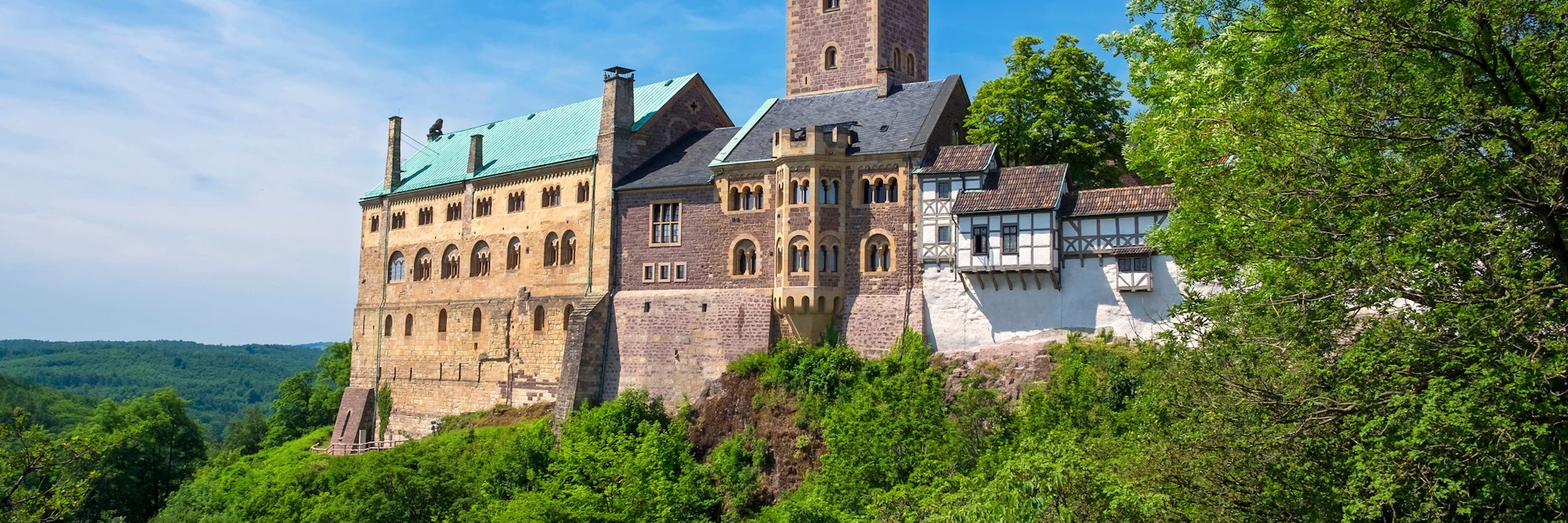When it comes to medieval castles and their importance in German history, Eisenach's Unesco-listed Wartburg dominates the landscape. This huge medieval castle, 40,000 tonnes of sandstone on a craggy hill, has featured in a millennium of German history, and is where Martin Luther, excommunicated and under papal ban, translated the New Testament, in the process codifying the written German language. Allow at least two hours: one for the guided tour, and the remainder for the museum, Luther's rooms and the views.
According to legend, the first buildings were put up in 1067 by the jauntily named local ruler Ludwig the Springer in an effort to protect his territory. In 1206 Europe’s best minstrels met here for the 'Battle of the Bards', a medieval version of Pop Idol later immortalised in Richard Wagner’s opera Tannhäuser. Shortly thereafter, Elisabeth, the Wartburg's most famous châtelaine, arrived. A Hungarian princess, she was married off to the local landgrave at age 14 and later chose to abandon court life for charitable work, earning canonisation quickly after her early death, aged 24, in 1235.
In 1817, students organised the first Wartburg Festival, an early popular expression of German nationhood held in the splendid top-storey Festssaal, which is still used for ceremonies and recitals. Despite 19th-century modifications reflecting romantic notions of history (such as the splendid mosaics of 'Saint Eisabeth's bower') much of the 12th-century structure remains intact. In fact, the principal palas is one of the finest Romanesque buildings surviving in northern Europe.
To walk to the Wartburg from the Markt, head one block west to Wydenbrugkstrasse, then turn southwest along Schlossberg through the forest via Eselstation (this takes about 40 minutes, and some parts are rather steep). A more scenic route is via the Haintal (50 minutes).
From April to October, bus 10 runs hourly from 9am to 6pm from the Hauptbahnhof (with stops at Karlsplatz and Mariental) to the Eselstation, from where it’s a steep 10-minute walk up to the castle. In winter bus 10 runs hourly, 10am to noon and 2pm to 4pm.




